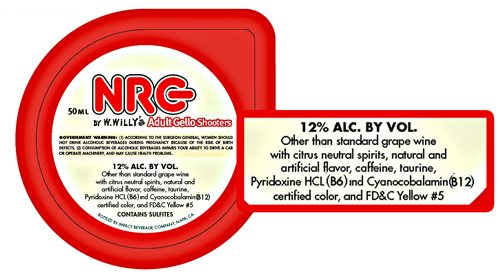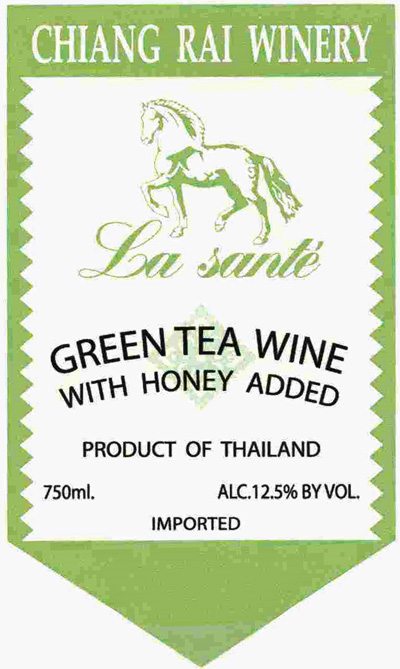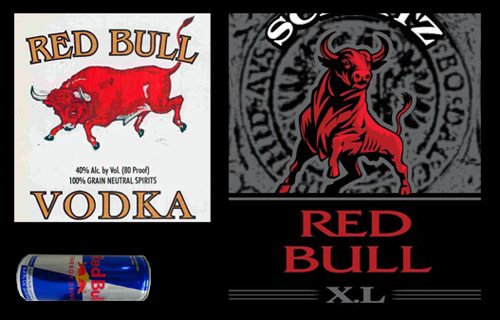Controversy in a cup. This little shooter raises a lot of TTB issues. First of all, it’s a gel-shot and those can be controversial from time to time. Next, it is technically a wine but it has added spirits — in the form of citrus neutral spirits (vodka, for all intents and purposes) and flavors. But wait, there’s more. It contains caffeine. It contains taurine. And … it contains added vitamins, in the form of Vitamin B6 and B12 (pyridoxine and cyanocobalamin). Not too surprisingly, this 2006 gem of an approval is also “surrendered” (see about halfway down the form). As of this writing, TTB does not allow vitamins to be directly added to beer, wine or spirits. Until recent months, TTB allowed vitamins to be added so long as their was no direct reference to the vitamins on the label or in advertising. TTB is at the early stages of developing regulations related to alcohol beverages containing vitamins, minerals and caffeine.
Continue Reading Leave a Commentcaffeine/secondary effects
TTB Not OK with Vitamin Wine

Tags: caffeine/secondary effects, ingredients, legally interesting/controversial, non-liquid, nutrition, policy
Energy Not Allowed

You can Google “energy vodka” or “energy beer” and find millions of links in each case. But you won’t find much by way of references to “energy” on TTB-regulated labels. TTB seems to be dead-set against allowing this term, almost without regard to the context. Edison Light Beer illustrates this. The product does not even contain caffeine or other stimulants. The label does, however, make a passing reference to “energy,” saying: “Edison brings new energy to light.” Or at least it did. TTB banished the term in this March 2007 temporary approval. By the time of this March 2008 replacement approval, Edison’s energy was dissipated without a trace.
Continue Reading Leave a CommentTags: caffeine/secondary effects, legally interesting/controversial, policy, speech
Caffeine: It’s Not Just for Beer and Coffee Liqueur Anymore

TTB has been allowing caffeine in alcohol beverages since the day it became TTB, and ATF allowed it for decades prior. At first, it was most often found in things like coffee liqueur. Then it jumped to beer about eight years ago (with this Sparks label that seems to be the earliest beer with caffeine approval, and one of the first with directly added caffeine — in beer, wine or spirits). Well it took a while, but our favorite alkaloid has finally made the jump to wine. So far, we find at least four wines with clear evidence of caffeine. They are:
- Cafe Lue Orange Wine with Coffee
- Chang Rai Green Tea Wine
- Charbay Aperitif Wine with Tea Leaves
- P.I.N.K. Sake with Caffeine
Somehow I don’t imagine the skateboard crowd getting crazy with Charbay Aperitif Wine or P.I.N.K. Sake. A list of more than sixty approvals, for alcohol beverages with caffeine, is here.
Charbay Aperitif Wine with Tea LeavesContinue Reading Leave a CommentTags: caffeine/secondary effects, legally interesting/controversial, policy
Energy Beer

TTB is not likely to allow anything labeled as “energy beer” anytime soon. But that doesn’t mean there is any shortage of beer tinged with caffeine. Notwithstanding the demise of Sparks and Tilt, there is a big upsurge in beers with added caffeine, guarana, tea, yerba mate — and coffee. Today, coffee. Pipeline Porter is made with 100% Hawaiian Kona Coffee according to the label. Joe is brewed with coffee, by Philadelphia Brewing Company of Philadelphia, Pennsylvania. Yeti is stout aged on oak chips with coffee added. The front label pretty much suggests serving it with breakfast. None of these labels mention energy, stimulants, caffeine, or the amount of caffeine, so the consumer is left to guess. My grandpa Joe never dreamed of beer mixed with coffee or any other alcohol beverage that would perk him up.
Continue Reading Leave a CommentTags: caffeine/secondary effects, ingredients, legally interesting/controversial, policy
Red Bull Vodka and Beer

It’s a wonder that Red Bull (of Austria) has not yet come out with with an alcohol beverage. It would be likely to be a smash, in that the product is so very popular as a mixer. Perhaps things are going so well with the energy drink that there is no need to mess with it. But more likely, these two products beat the Austrians to the punch. Miller Brewing Company has approvals for Red Bull Malt Liquor going back at least as far as the early 1980s. Likewise, Majestic Distilling has approvals for Red Bull Vodka going back to 1990 or so. This Dog Style Vodka is one of the few TTB products to make explicit reference to the famous energy drink.
Continue Reading Leave a CommentTags: business strategy, caffeine/secondary effects, famous, trademarks-beverage
Double Caffeine

Not content with simply adding coffee flavor to vodka, Vincent Van Gogh went further, all the way to “Double Caffeine.” Not so long ago, it was not clear that TTB would allow caffeine to be added to alcohol beverages, let alone to double it up and proclaim it on the label. Van Gogh coffee flavored vodka is one of about 18 flavored vodkas made in Holland and imported by Luctor International of Orlando, Florida. The other caffeinated spirit above is Volta. It is Vodka Infused with Caffeine, Guarana, Taurine & Yerba Mate, made by White Rock Distilleries of Lewiston, Maine. Van Gogh Double Espressso is easy to find at retail, but Volta is less easy to find. All the extra caffeine may have gotten this retailer a bit over-excited; IWS describes it this way:
Continue Reading Leave a CommentDouble Intensity. Experience the finest tradition of Venice with the high art of great taste. … Delivers a wealth of flavor for those who expect more from their coffee – powerful yet sophisticated, with the stronger and richer character demanded by the espresso lover’s highly developed palate. Here is all the smooth brilliance of great caffé, in the only FDA-approved vodka on the market today with the bold touch of double caffeine.

